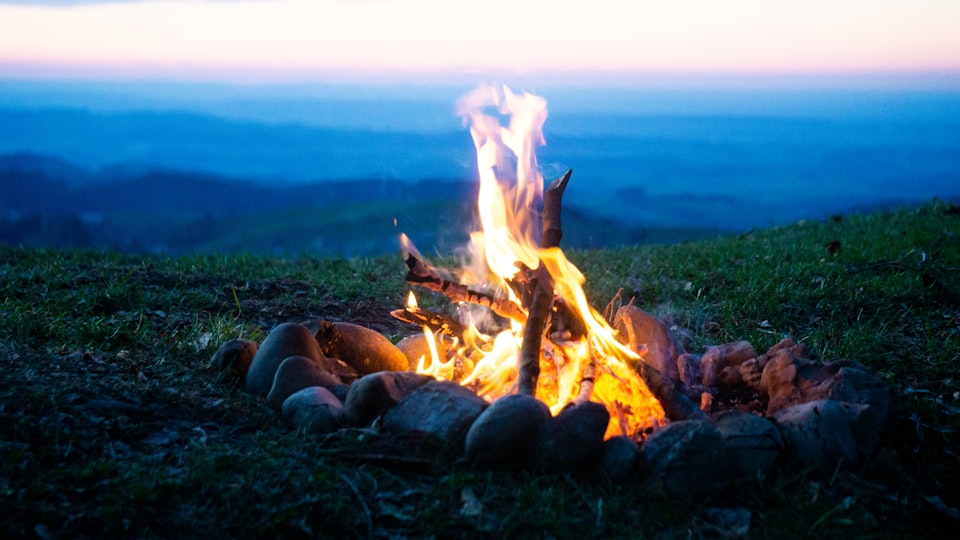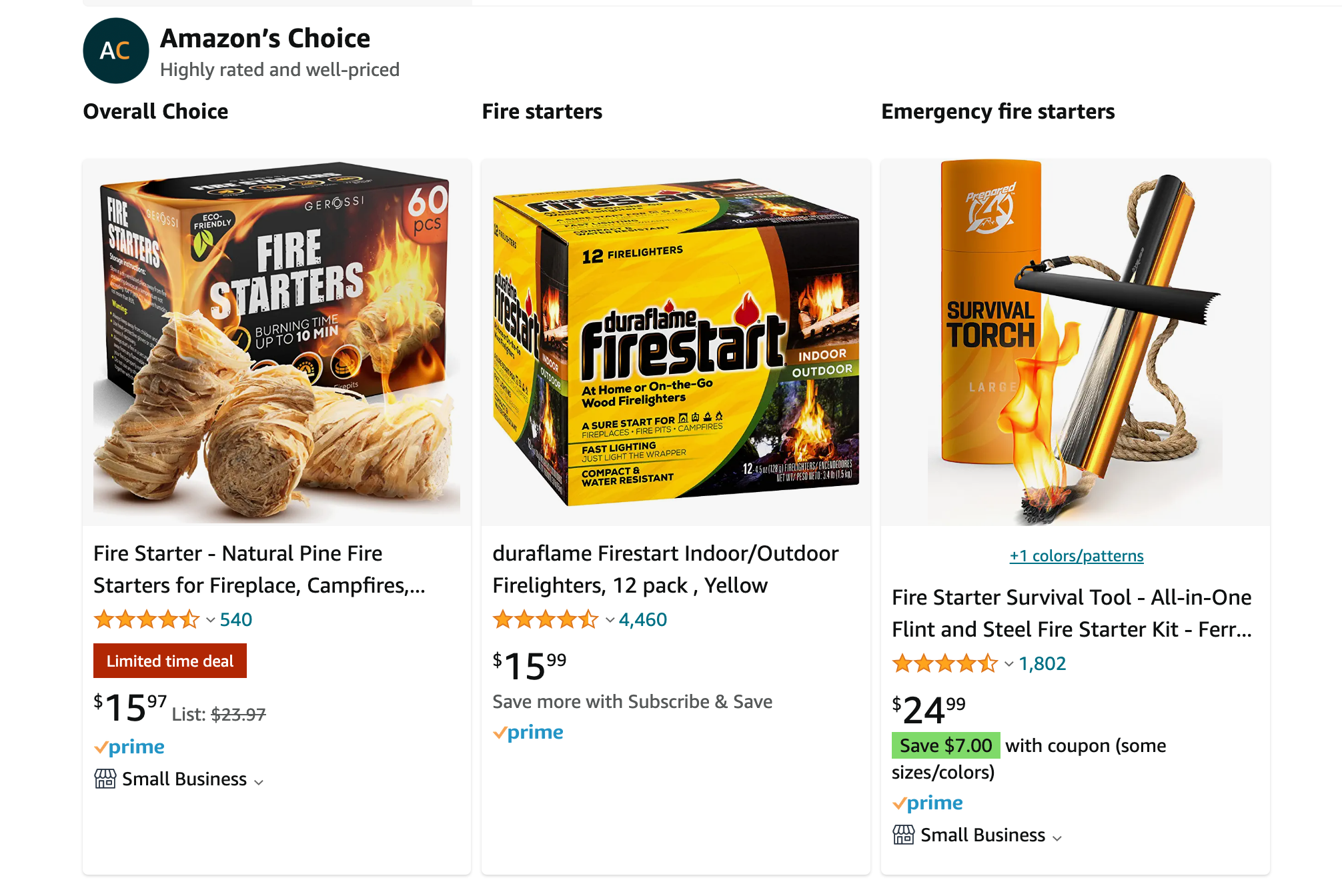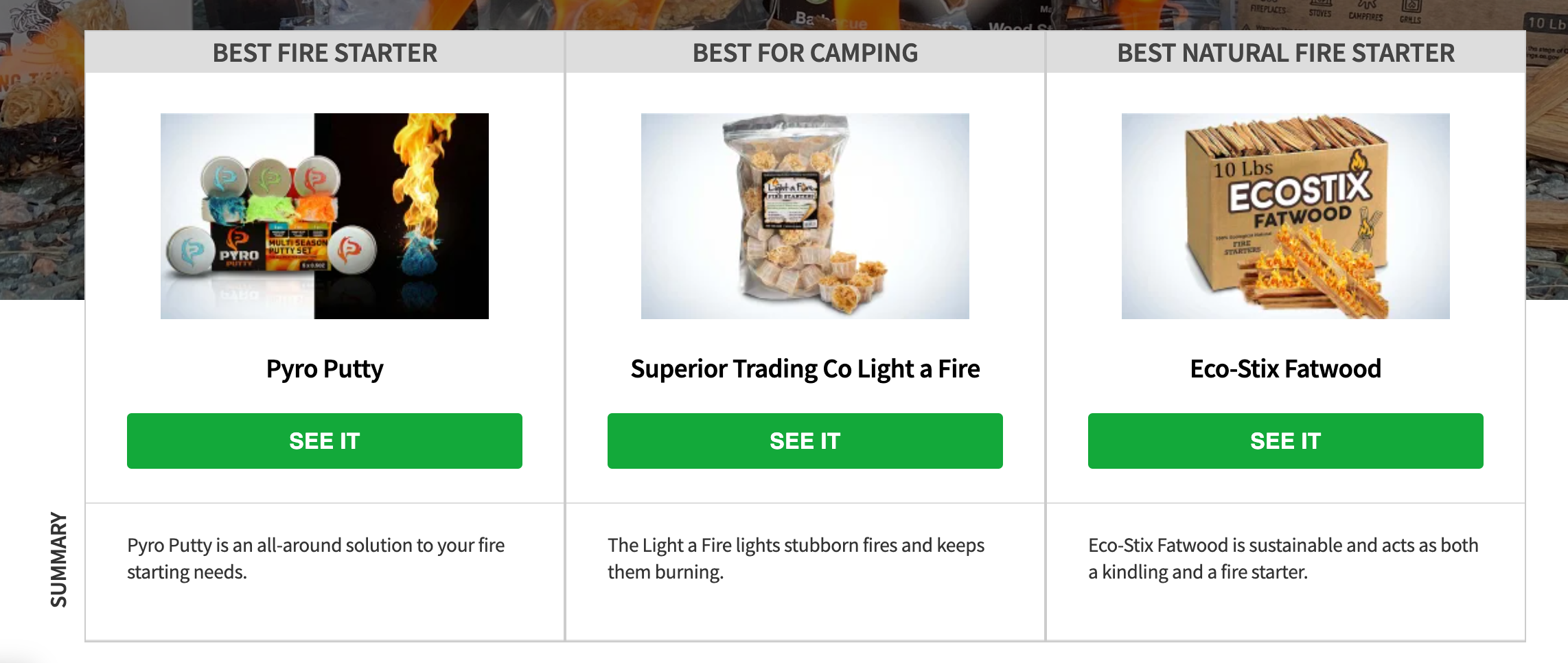Firestarter is an ambiguous term

Summary
- Firestarter is an overloaded term that's often used to refer to any/all of: ignition method, tinder, or kindling.
- Use these specific terms instead of "firestarter" to prevent confusion and reinforce a clear mental model for fire-craft.
The Problem
When I search "firestarter" on Amazon, I find this:

These are 3 pretty different things [example-classification]:
- The leftmost item is a small bundle of pine shavings soaked in paraffin wax.
- The middle item is a medium-sized brick of "sawdust, agricultural fibers, waxes and oils" (source) wrapped in a flammable wrapper.
- The rightmost item is a ferrocerium rod (also known as a fire steel) that generates sparks. This is commonly mistaken for a flint-and-steel, which is a different thing altogether.
This categorical conflation isn't specific to Amazon listings. Here's OutdoorLife, a magazine focused on the hunting/shooting/survival crowd, with the "Best Fire Starters of 2023". It too has a mix of items:


So if you're going on a camping trip with someone [camping-typology], and they ask you to bring a firestarter, what should you bring?
"Firestarter" is too ambiguous a term. More importantly, it impedes a proper understanding of how to build a fire.
The Solution
Instead of "firestarter", use these more specific terms that fit well into a mental model for fire-making:
- Ignition method: the initial source of heat that sets off the self-sustaining chemical chain reaction that is fire
- Tinder: the first bit of material that you ignite
- Kindling: the next set of material that combusts, its thermal energy unlocked by the tinder
- Fuel: the material that sustains a fire, ignited by the kindling
As we've seen, "firestarter" is often used for any of the first three terms. Instead, identify what you need and name it accordingly: ignition method, tinder, kindling, or fuel.
These steps—in that order—compose the "Fire Train" (Surviving the Wild, p. 103). This is a mental model for understanding how we build up a fire. We want to bootstrap an ignition chain, where we use a small amount of energy to unlock stored energy, which in turn unlocks even more stored energy. That metaphorical train builds up momentum as more and more material catches alight.
Here's a video that illustrates this progression well, as well the related core concepts of the Fire Triangle (heat, fuel, air) and a unique Fire Lay (how you layout the materials to burn):
Some items can be combinations of these steps:
- A long-burning, stormproof match can be both an ignition method and tinder.
- Something like the Duraflame firelog can be both kindling and fuel.
Footnotes
[camping-typology]: The different types of camping is its own blog post. For the purposes of this post, assume car-camping, defined as driving to a campground, setting up a tent separate from the vehicle, and sleeping in that overnight. Anyone doing anything beyond that is best served by taking at least one wilderness survival skills class.
[example-classification]: Now that we know our terminology, we can identify the pine/paraffin bundles as tinder and the ferro rod as an ignition method/source. The Duraflame wrapper is tinder and its contents are kindling.